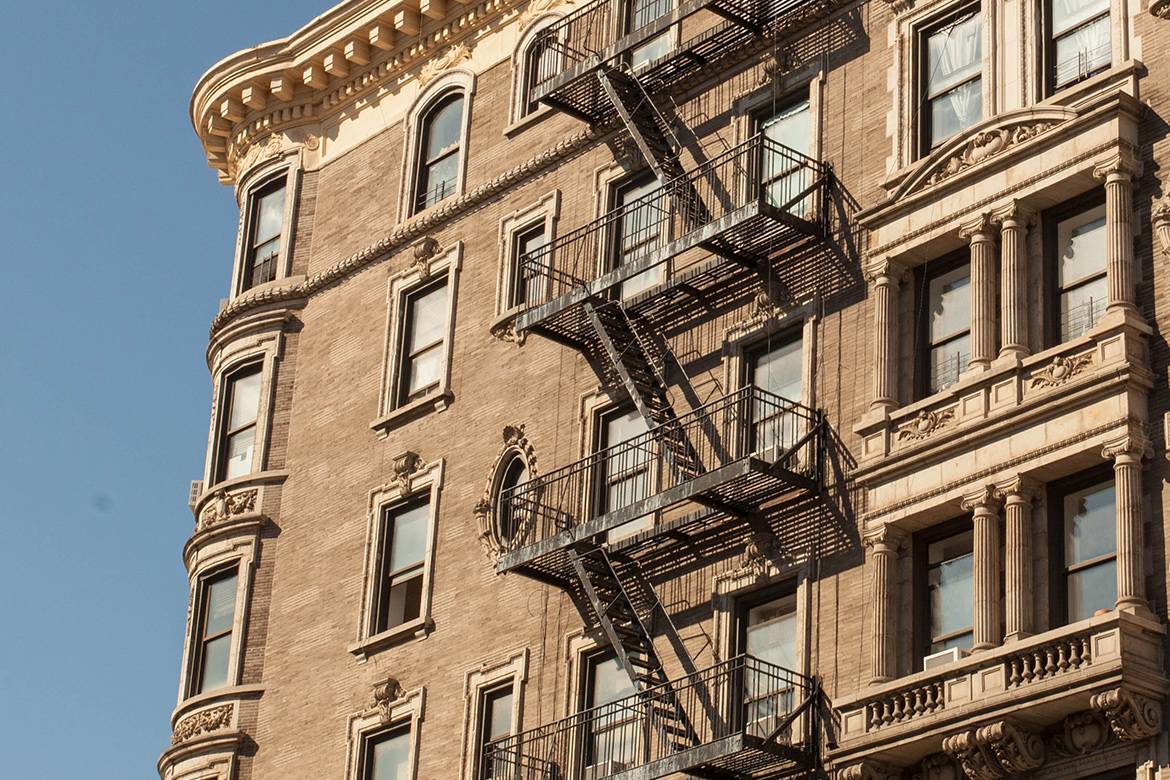A fire escape, or, sometimes called, an evacuation one, must be in a building with a height of more than two floors – such a requirement is indicated in the corresponding GOST. However, even five floors high in private houses, such stairs are not always mounted; the owners believe that they do not need them. Often, construction company in NYC additional external stairs are designated as an emergency exits. This is a huge omission since stationary fire escape installation NYC are the most important strategic object that can save many people’s lives.
There are many requirements for a fire escape today, including:
- The main purpose of such a design is to help people quickly leave the room in case of fire or other emergencies.
- Such a staircase should lead people out of the building. It mustn’t lead to the basement or another floor.
- Locking mechanisms or other obstacles must not be placed on the escape route.
- If there are doors, they must open outwards without difficulty.
- The door must be such that anyone can quickly open it, regardless of their physical parameters.
- If it was decided to place a fire escape on a balcony or a loggia, then remember that such structures are forbidden to be removed or littered with all sorts of unnecessary things. Hatches between floors should also not be welded or laid.
- Distinguish between internal and external fire escapes.

Purpose And Use of Fire Escapes
Dimensions and design features of fire escapes may vary. When drawing up a project, an analysis of the likelihood of fire in different building parts is carried out; following this indicator, the location, design features and dimensions of evacuation stairs are determined.
Requirements for Fire Escapes
The rules for designing stairs, including evacuation stairs, are regulated by GOST standards. According to the documentation, the following requirements are imposed on the evacuation routes of any buildings:
Evacuation passages are designed taking into account the maximum estimated density of people in the premises. Ying of pipelines and open electrical cables is not allowed near the evacuation routes. In addition, regulations prohibit the installation of lifting structures near fire escapes. The walls adjacent to the evacuation routes must be reinforced.The design and fire escape installation NYC are carried out under the careful supervision of regulatory authorities. In case of non-compliance with the requirements prescribed in the regulatory documentation, the building is not allowed to be put into operation.
Types of Fire Escapes
There are several types of evacuation stairs.
Vertical Escape Stairs
They are used in buildings up to 20 m high, and stairs above six meters must have a protective fence. To simplify delivery and installation, structures of this type are usually made from separate prefabricated sections. They are used for maintenance of the building during operation and fire extinguishing.
Marseille Receptions
These ladders are attached to the building at one end only. They are used for arranging inter-floor passages and equipping the building with additional exits.
Marching Multi-Span
Multi-span flight stairs are considered the safest and are used to organize additional access to the roof of civil and industrial buildings and as an emergency exit. Installation of the stairs is carried out using bolted connections, which reduces the need for welding.
Fastening of stairs to the walls is carried out with the help of beams, which ensure the stability of the finished structure to high loads.When outdoor stairs are placed, they must be regularly cleaned of dirt and precipitation since violation of the cleanliness of the coating can lead to injury. In addition, for safety reasons, stairs must be equipped with railings. Enclosing structures are stainless steel or other metals and are treated with anti-corrosion reagents.

Operational Testing of Fire Escapes
Owners of public premises and office buildings must maintain evacuation stairs properly since the speed and safety of evacuation in emergencies depend on this. Structural elements of stairs and railings must be securely connected and be firmly attached to the wall. At the same time, cracks in the wall and deformations of metal structures are not allowed.
Metal elements must be primed and painted following the requirements of GOST. The most beneficial is the hot-dip galvanizing treatment, which improves the material’s performance. This increases wear resistance and significantly reduces the risk of corrosion. In addition, zinc coating increases the fire escape of the metal structure.
Regulatory documents regulate requirements for evacuation passages and the timing of their verification. When checking, the strength of stairs and roofs is assessed using special equipment. All devices must have the appropriate certificates.The reliability of landings is checked by using heavy weights placed on the landing for a few minutes. After removing the load, the site is inspected, and deformation is determined.

Conclusion:-
Compliance with fire safety requirements is checked before putting the facility into operation. However, over time, the characteristics of structures may be violated due to external influences. Therefore, periodic checks of the serviceability of evacuation routes should be carried out. The inspection is carried out during daylight hours by a licensed organization. Its results are entered into the protocol, based on which a conclusion is made on the suitability of the evacuation structure for operation.

